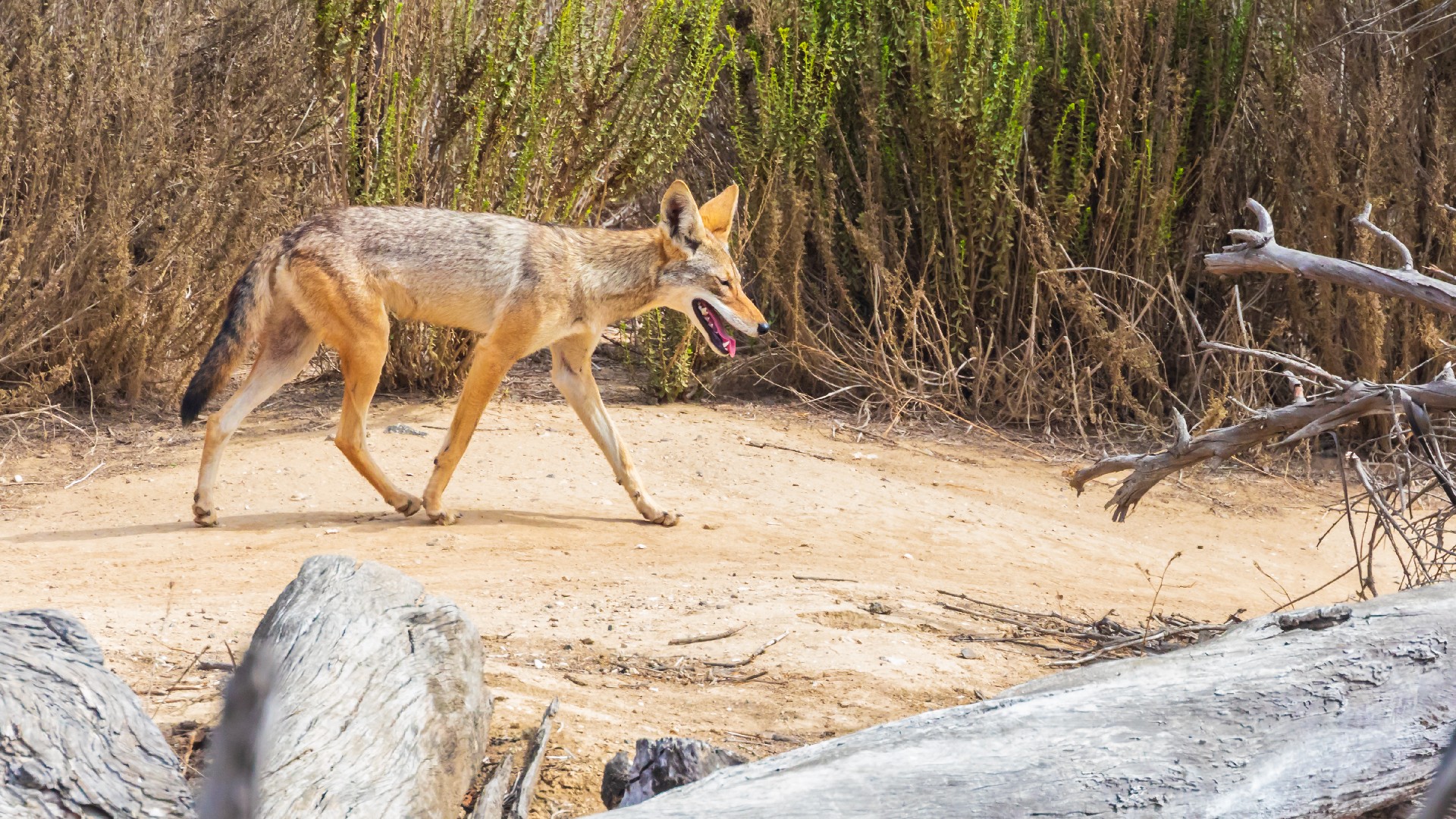Coyote
A species of Wolves jackals and allies, Also known as Prairie wolf, Cased wolf, Barking dog, Mountain coyote Scientific name : Canis latrans Genus : Wolves jackals and allies
Coyote, A species of Wolves jackals and allies
Also known as:
Prairie wolf, Cased wolf, Barking dog, Mountain coyote
Scientific name: Canis latrans
Genus: Wolves jackals and allies
Content
Description General Info
 , used under CC-BY-SA-2.0 /Cropped and compressed from original
, used under CC-BY-SA-2.0 /Cropped and compressed from original Description
Coyote males average 8 to 20 kg (18 to 44 lb) in weight, while females average 7 to 18 kg (15 to 40 lb), though size varies geographically. Northern subspecies, which average 18 kg (40 lb), tend to grow larger than the southern subspecies of Mexico, which average 11.5 kg (25 lb). Body length ranges on average from 1.0 to 1.35 m (3 ft 3 in to 4 ft 5 in), and tail length 40 cm (16 in), with females being shorter in both body length and height. The largest coyote on record was a male killed near Afton, Wyoming, on November 19, 1937, which measured 1.5 m (4 ft 11 in) from nose to tail, and weighed 34 kg (75 lb). Scent glands are located at the upper side of the base of the tail and are a bluish-black color. The color and texture of the coyote's fur varies somewhat geographically. The hair's predominant color is light gray and red or fulvous, interspersed around the body with black and white. Coyotes living at high elevations tend to have more black and gray shades than their desert-dwelling counterparts, which are more fulvous or whitish-gray. The coyote's fur consists of short, soft underfur and long, coarse guard hairs. The fur of northern subspecies is longer and denser than in southern forms, with the fur of some Mexican and Central American forms being almost hispid (bristly). Generally, adult coyotes (including coywolf hybrids) have a sable coat color, dark neonatal coat color, bushy tail with an active supracaudal gland, and a white facial mask. Albinism is extremely rare in coyotes; out of a total of 750,000 coyotes killed by federal and cooperative hunters between March 22, 1938, and June 30, 1945, only two were albinos. The coyote is typically smaller than the gray wolf, but has longer ears and a relatively larger braincase, as well as a thinner frame, face, and muzzle. The scent glands are smaller than the gray wolf's, but are the same color. Its fur color variation is much less varied than that of a wolf. The coyote also carries its tail downwards when running or walking, rather than horizontally as the wolf does. Coyote tracks can be distinguished from those of dogs by their more elongated, less rounded shape. Unlike dogs, the upper canines of coyotes extend past the mental foramina. 
General Info
Lifespan
10-14 years
Diet
Coyote, often known as the coyote, primarily feeds on small mammals like rabbits and rodents. However, its diet is highly versatile, including fruits, insects, reptiles, and carrion, adapting based on food availability within its habitat.
Appearance
Coyote is a medium-sized mammal with a sleek body covered in thick, coarse fur. Showcasing a blend of gray, brown, and white, coyote displays a distinctive coat pattern which often varies based on the region. Sporting large, upright ears, bright eyes, and a bushy tail, these creatures are notably equipped with a narrow, pointed snout. Aging or sexual dimorphism does not significantly affect their appearance.
Behavior
Coyote is known for its adaptability and cunning. Typically nocturnal, they can adjust their schedule according to human activity. As omnivorous foragers, their diet varies seasonally, switching from small mammals to fruiting plants. Socially, coyote engages in complex pack behavior, but solitary existence isn't uncommon. They use urination and defecation for territorial marking and communicate vocally through their signature howls.
Population
Increasing